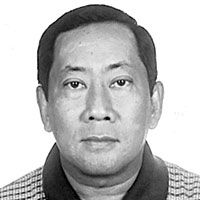Fixing our country: Where did we go wrong?

Last Sunday, January 1, I decided to just ride around Cebu City on my bike with my son JV and my good friend Boging Palacios as traffic was very light and somehow the ride was an eye-opener for me. First off, we rode to Colon St. and it was the first time that I realized that the City of Cebu had closed that part of Colon St. due to the fire that hit Gaisano South. This fire happened a week ago, but due to the danger of the building collapsing, the road has now been shut down. For how long? We don’t know.
I’d like to emphasize that the closure of this part of Colon St. is very disruptive for the businesses in the area, which is why Mayor Michael Rama should come up with a timetable to reopen Cebu’s oldest street as quickly as possible. We should not wait for private contractors to destroy the gutted Gaisano South. I just hope that the City of Cebu would consider this situation as a priority for the New Year.
Then we rode off to the South Road Properties (SRP) and once again it opens your eyes to a problem that repeats itself year, after year, after year. The SRP is Cebu City’s only freeway style of roadway… it was opened less than ten years ago, but the asphalted main carriageway has already deteriorated and is potholed… proof that asphalt doesn’t last long enough.
This brings me back to what my old friend, Mr. Joel Yu always tells me in many of my TV interviews with him… “That the biggest problem of this country is that, we just can’t fix whatever is wrong with us.” Indeed it is for this reason why the Philippines cannot move forward especially when we compare ourselves to ASEAN. How much more for the rest of the world?
The Year 2012 is the 66th year under an independent Philippine Republic and too many of us know in our hearts that we were once 2nd to Japan during the 50s and thanks to our centralized system of governance, the Philippines is a tad better than Bangladesh today. When we were next to Japan in the 50s, the Korean Peninsula suffered through the Korean War. In the mid-60s, Indo-China suffered through the Vietnam War. These two nations were devastated by these wars against each other. North Vietnam won against the South and has become a Communist state, while the Korean Peninsula was split into two nations, North and South Korea.
Look at these two countries today, South Korea, a democracy has flourished and is considered next to Japan and could very well catch up. Their electronics industry, Samsung and LG, has given the world leader Sony the run for its money. Hyundai or Kia cars are competing head-to-head with world market leaders, Toyota and Honda in quality, accessories and prices.
If you didn’t know, South Vietnam has all but overtaken the Philippines because even if it is a Communist state, it has adopted the Capitalist formula of the People’s Republic of China. Best of all, they export rice to us. Compared to these two countries, one can really say that the Philippines did not just stagnate… but went on reverse and the gap is widening!
If you ask yourself… where did we go wrong? If you looked at the performance of the private sector, especially in the I.T. Industry, we have already become global competitors, which proves that Cebuanos can compete in any industry, whether it is computer design, watch manufacturing or ship building. Indeed, Filipinos are world class employees sought after in many nations of the world. So the private sector is not the problem.
Therefore our problem lies upon our system of governance. Just look around you. When you see our potholed roads, the blame goes to a national agency tasked to fix our roads. That’s DPWH. Look at our educational system… it has already deteriorated to the point that NGOs like the Ramon Aboitiz Foundation, Inc. (RAFI) or Aboitiz Group Foundation (AGF), had to give computers and fix many dilapidated schools. DepEd cannot hack it!
How many more examples do you need before you admit that I am right? Just take a good look at the Bureau of Fire Protection (BFP); we have poorly trained firemen who are equipped with old and decrepit fire fighting equipment. Even our Office of the Building Official (OBO), which is under the control of the Department of Public Works and Highways (DPWH), are following ancient minimal building requirements like a wider sidewalk.
At this point, I would like to hear the sentiments of the Cebuanos whether or not they are satisfied with the way Imperial Manila has ruled the country. Today, almost all our Senators come from Luzon. Except for Rene Almendras there are no Cebuanos in the Aquino Cabinet. Perhaps it is time for our socio-civic leaders to come up with a referendum whether we should continue with the status quo or not? I dare say that it is time we demand from our political leaders for a change in our system of governance. Let our students and political leaders start the debate on this issue.
* * *
Email: [email protected]
- Latest
- Trending




























